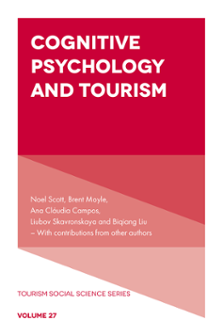
Index
Cognitive Psychology and Tourism
ISBN: 978-1-80262-580-6, eISBN: 978-1-80262-579-0
ISSN: 1571-5043
Publication date: 24 June 2024
Citation
Scott, N., Moyle, B., Campos, A.C., Skavronskaya, L. and Liu, B. (2024), "Index", Cognitive Psychology and Tourism (Tourism Social Science Series, Vol. 27), Emerald Publishing Limited, Leeds, pp. 393-403. https://doi.org/10.1108/S1571-504320240000027031
Publisher
:Emerald Publishing Limited
Copyright © 2024 Noel Scott, Brent Moyle, Ana Cláudia Campos, Liubov Skavronskaya and Biqiang Liu. Published under exclusive licence by Emerald Publishing Limited
INDEX
- Prelims
- Section 1 Introduction to the Cognitive Approach
- Chapter 1 Introduction
- Chapter 2 Cognitive Science and Tourism
- Chapter 3 The Cognitive Wave
- Chapter 4 Updating Tourism Theory
- Chapter 5 Conceptual Disambiguation
- Section 2 Processes
- Chapter 6 Sensation and Perception
- Chapter 7 Consciousness
- Chapter 8 Emotions
- Chapter 9 Motivation and Goals
- Chapter 10 Novelty and Tourism
- Chapter 11 Memory
- Chapter 12 Memory Schema
- Chapter 13 Prospection and Tourism
- Chapter 14 Coping Strategy and Negative Emotions
- Section 3 Applications
- Chapter 15 Experience Design
- Chapter 16 Experience Co-Creation
- Chapter 17 Inspiring Awe in Immersive Nature Tourism Experiences
- Chapter 18 Mindfulness and Tourism
- Chapter 19 Why Stories Work
- Section 4 Methods
- Chapter 20 Eye-Tracking in Tourism
- Chapter 21 Neuroscience for Tourism Research
- Chapter 22 Direct Effects of Tourism Commercials
- Section 5 Conclusion
- Chapter 23 A Cautionary Tale
- Chapter 24 Conclusion
- References
- Index